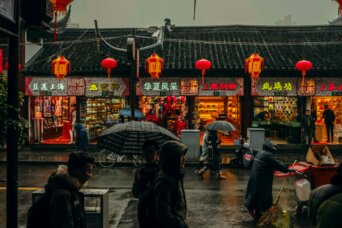- About
- Topics
- Picks
- Audio
- Story
- In-Depth
- Opinion
- News
- Donate
- Signup for our newsletterOur Editors' Best Picks.Send
Read, Debate: Engage.
| topic: | Climate Change |
|---|---|
| located: | China |
| editor: | Chermaine Lee |
Since August, amid China’s record-breaking heatwave and severe droughts, China has deployed over 70 flights to shoot silver iodide rods into the sky to induce rainfall. This also came after the country’s giant river Yangtze reached its lowest water level. The use of artificial rainfall came as no surprise, as Beijing previously announced that its cloud-seeding project – the world’s largest – will expand fivefold to cover over half of China and be completed by 2025
While Chinese officials lauded the technology for slashing the recent scorching heat, easing farming challenges and taming wildfires, cloud-seeding has stirred controversies on its effectiveness and potential environmental harm since it first emerged in the 1940s in the US.
One of the biggest concerns from scientists is the chemicals that are fired to the sky for generating rain or snow can incur potential damage to the biodiversity. Although certain studies suggest that the amount of harmful substances – silver iodide – is too low to have any effect on soil and water, some others say that repeated cloud seeding in the same area can “moderately affect” the ecosystems in both land and water. Silver iodide can cause skin rashes, a running nose and headache, among other symptoms if one continuously ingests it.
Its effectiveness has also been in doubt for decades since its efficacy is not consistent: in areas without enough cloud cover, the technology does not work, and even when the tech does work, it is found to only be able to squeeze up to 15 percent more rain out of the clouds.
The cost of the yet-to-be-proven technology is so high that Israel put its cloud seeding programme to a halt last year since it offered minimal effects on rainfall and “was not economically efficient.”
There is also a geopolitical angle to the seemingly appealing climate technology – Israel and the United Arab Emirates’ cloud seeding efforts to mitigate their droughts were seen by Iranian officials as an act of “stealing” rainfall. Despite no scientific evidence to support such a claim, it has not stopped nations from casting a wary eye over the tech.
With more frequent and more serious extreme weather events induced by climate change, the use of cloud seeding is expected to increase. It remains to be seen whether the massive investment in the technology, with much potential but also much uncertainty, will be a game-changer in regions battered by severe droughts, or yet another piece of greenwashed geoengineering.
Photo by Nuno Alberto

